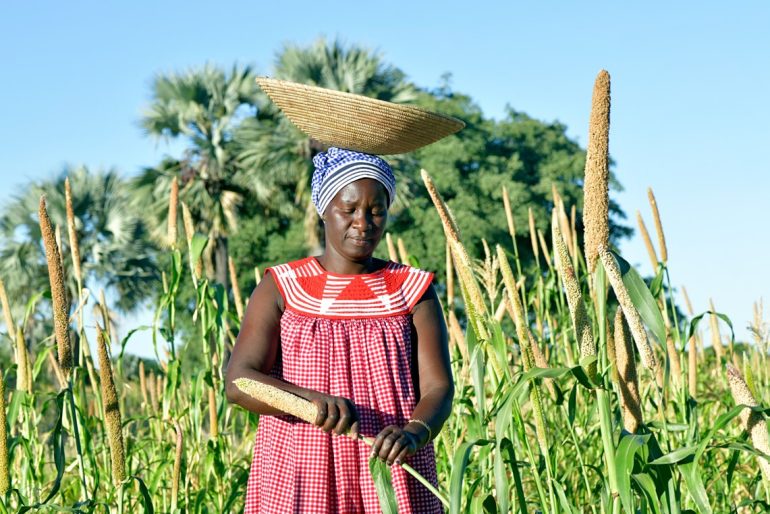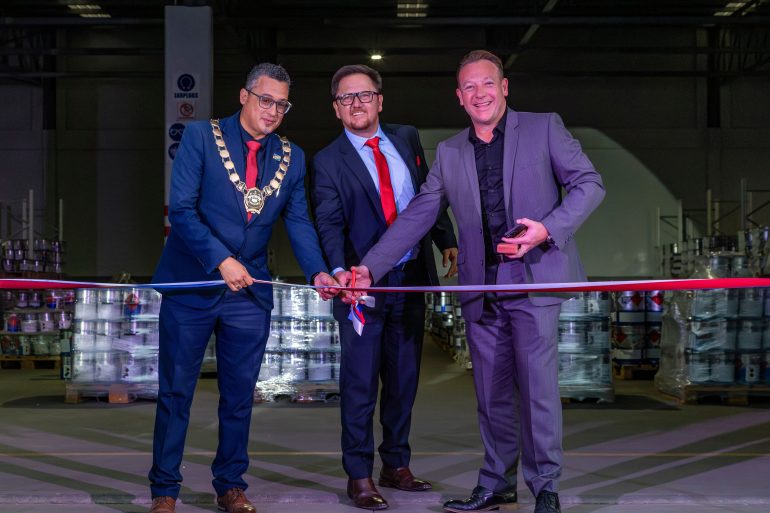Omanyano ovanhu koikundaneki yomalungula kashili paveta, Commisiner Sakaria takunghilile
Veronika Haulenga
Omanyano ovanhu koikundaneki yomalungula kashili paveta, Commisiner Sakaria takunghilile
Veronika Haulenga
Listeners:
Top listeners:
-
play_arrow
Omanyano ovanhu koikundaneki yomalungula kashili paveta, Commisiner Sakaria takunghilile Veronika Haulenga

A photograph of a Mahangu (Pearl Millet) harvester in northern Namibia has won first prize in an international photographic competition organised by the United Nations Food and Agriculture Organization (FAO). The competition was part of the FAO’s International Year of Millets, which raised awareness of the nutritional benefits of millets, including Mahangu, and their cultivation under changing climate conditions.
The picture, taken in May 2021 by Jonathon Rees, shows Maria Nakumbwata harvesting Mahangu at her homestead in Okahanya village in the Oshikoto Region. Mahangu is a staple food for more than half of all Namibians, and is well adapted to low rainfall and soil conditions in the country’s north-central regions. It plays a significant role in ensuring food security in rural communities.
The global photo contest was open to professional and amateur photographers and received more than 800 entries from more than 50 countries. The winning picture was selected by an international jury of photographers, photo editors, agronomists and communication specialists.
Jonathon worked as a journalist in Namibia in the 1990s and now runs the specialist communication agency Proof Africa. He took the winning photograph on assignment with the Deutsche Gesellschaft für Internationale Zusammenarbeit (GIZ) GmbH for the BioInnovation Africa (BIA) project, executed on behalf of the Namibian Ministry of Environment, Forestry and Tourism (MEFT) and funded by the German Government. The BIA project collaborates with the Eudafano Women’s Cooperative in northern Namibia, where the field work took place. Eudafano works with a network of women harvesters of the Marula fruit, which is an important commodity for local communities used to produce a high-quality oil for export. BIA has produced a short film about the Marula harvest and its biotrade value chain.
On behalf of the German Government, GIZ has been working together with the Namibian Government since 1990 with the aim to improve livelihoods for rural communities. Projects include biotrade and biodiversity, rural development, environment and climate change and sustainable infrastructure.
Written by: Staff Writer
climate conditions FAO Food and Agriculture Organization food security global photo contest International Year of Millets Jonathon Rees Mahangu Maria Nakumbwata Namibia Nutritional Benefits Okahanya village Oshikoto Region Pearl Millet professional photographers rural communities Staple Food United Nations
Similar posts
Most popular

Omuhwahwameki Michael okuunganeka oshikonga shoku patitha oostola dho Rani moshilongo ashihe.

Justice Served: Jandre Dippenaar Found Guilty of Six Murders in Swakopmund Court

The Alexforbes Lead Story – 12 December

Obituary: Hage G Geingob 3 August 1941 – 4 February 2024

Brazilian Tourist Arrested for Culpable Homicide in Fatal Otavi Collision
Copyright 2024 Future Media (Pty) Ltd | Website by Digital Platforms
Tel: +264 83 000 1000 | Email: news@futuremedia.com.na








